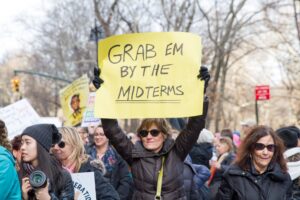 When I hear the term gender gap, I tend to think of the gender wage gap or the gender voting gap, both of which have been regularly discussed in the public domain in recent years. A summary of new research by Thomas B. Edsall, writing for the New York Times, reveals multiple dimensions of the gender gap that have implications for differences not only in voting patterns but also in government policy priorities and organizational leadership and cultures. These differences make the case for balanced representation.
When I hear the term gender gap, I tend to think of the gender wage gap or the gender voting gap, both of which have been regularly discussed in the public domain in recent years. A summary of new research by Thomas B. Edsall, writing for the New York Times, reveals multiple dimensions of the gender gap that have implications for differences not only in voting patterns but also in government policy priorities and organizational leadership and cultures. These differences make the case for balanced representation.
Edsall reports on the following statistics:
- In a 2016 survey of 137,456 full-time first-year students at 184 colleges and universities in the United States, the UCLA Higher Education Research Institute found the “largest-ever gender gap in terms of political leanings: 41.1 percent of women identified as liberal or far left, compared to 28.9 percent of men.”
- A Knight Foundation survey in 2017 of 3,014 college students asked, “If you had to choose, which do you think is more important, a diverse and inclusive society or protecting free speech rights?” Male students preferred protecting free speech over inclusion by 61 to 39 percent. Female students favored inclusion over free speech by 64 to 35 percent.
- The article “The Suffragist Peace,” published in 2018 by Joslyn N. Barnhart, Allan Dafoe, Elizbeth N. Saunders, and Robert F. Trager, cites research showing that preferences for conflict and cooperation are systematically different for men and women. Women prefer peaceful options and are more willing to see their leaders back down than engage in wars. They conclude that the more women participate in voting and governance, the more democracy and democratic peace will result.
- Other studies confirm earlier feminist research showing that men and women broadly differ in values as defined by care, fairness, benevolence, and protecting the welfare of others. In line with these differences in values, women are more likely than men to regard hate speech as a form of violence rather than as free-speech expression.
- Jonathan Haidt, a social psychologist at NYU’s Stern School of Business, notes that both men and women are competitive. While men enjoy direct status competition, women use competition strategies that minimize the risk of retaliation, disguise competition, and avoid interference in other women’s goals.
- Between 1992 and 2016, political scientists at North Carolina State University and Augusta University analyzed the responses of those who identified themselves as feminists or antifeminists based on surveys conducted by the American National Election Studies. During this period, the total number of voters saying they were feminists grew from 28 to 34 percent. The biggest gains were among young voters. Self-identification as feminist by women with college degrees rose from 34 to 61 percent in contrast to men with college degrees, whose self-identification as feminist fell from 37 to 35 percent.
In conclusion, the gender gaps described above have a lot of potential implications for government, organizations, and society. Certainly not all women or men are the same, but the trends in dimensions of gender differences described by Edsall suggest, in general terms, that women and men bring important contrasts to the table. Women still do not have equal representation in government or organizational leadership roles, both of which shape policy and culture. More representation and voice in these positions of influence could result in less war and more equitable organizations and society.
Photo by Mirah Curzer on Unsplash